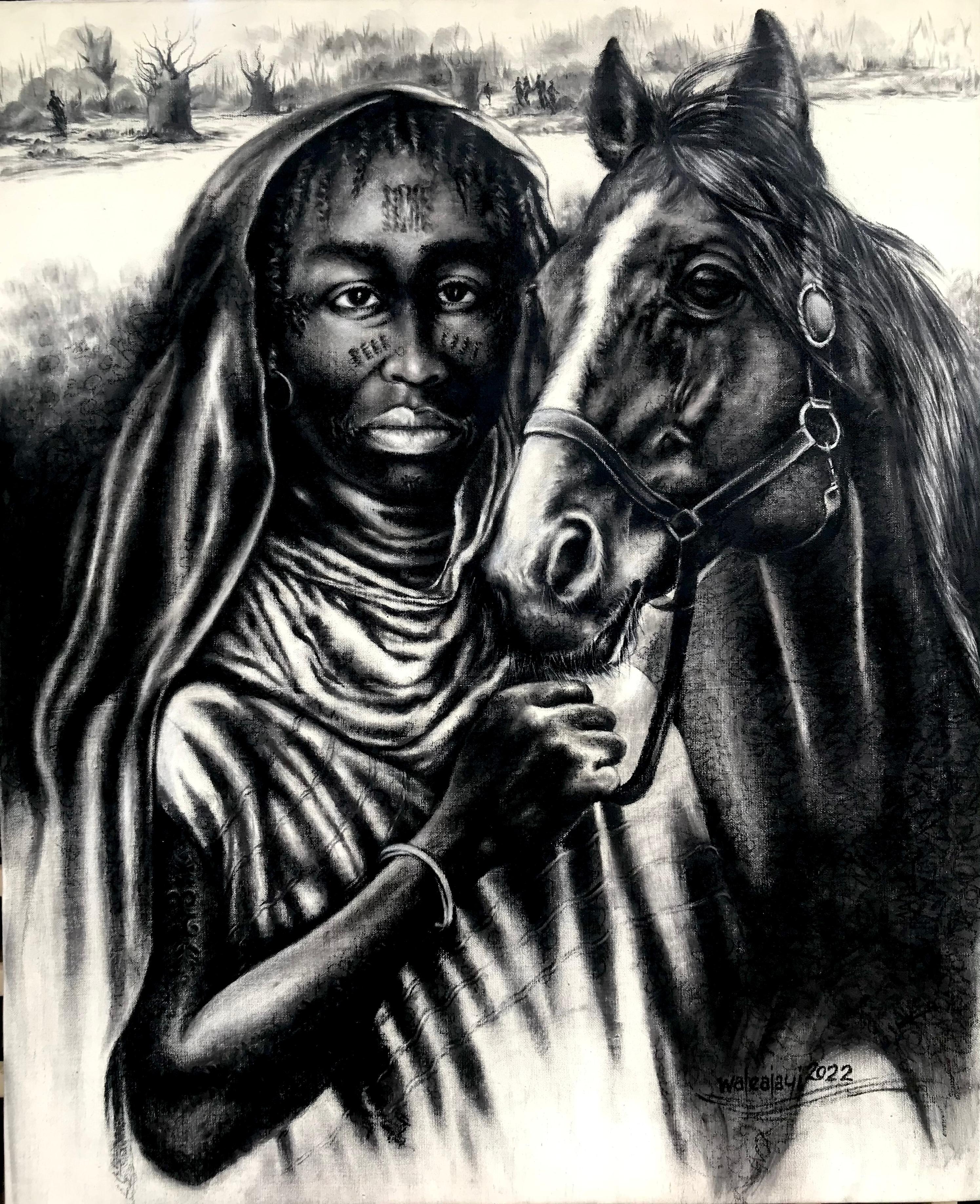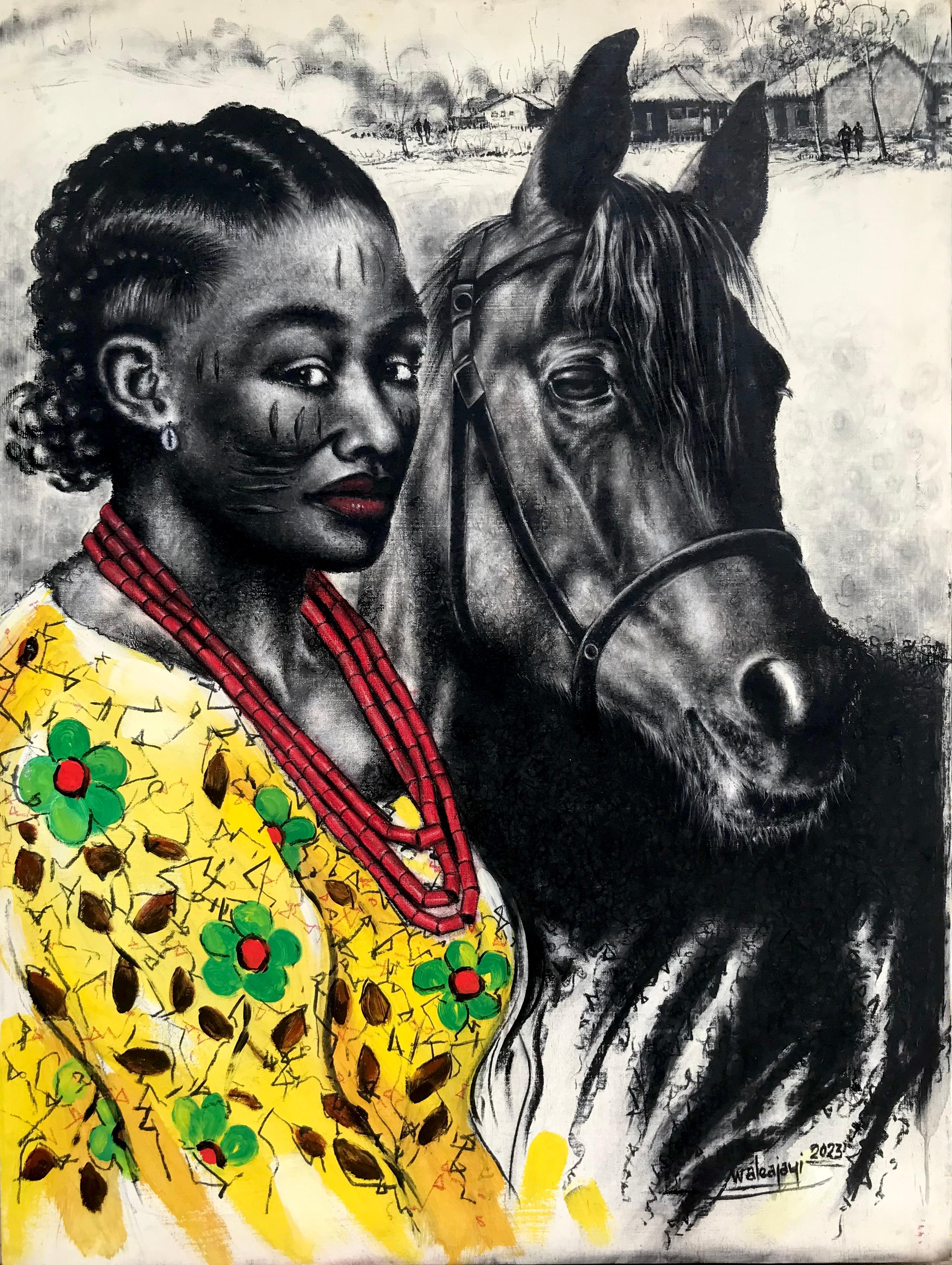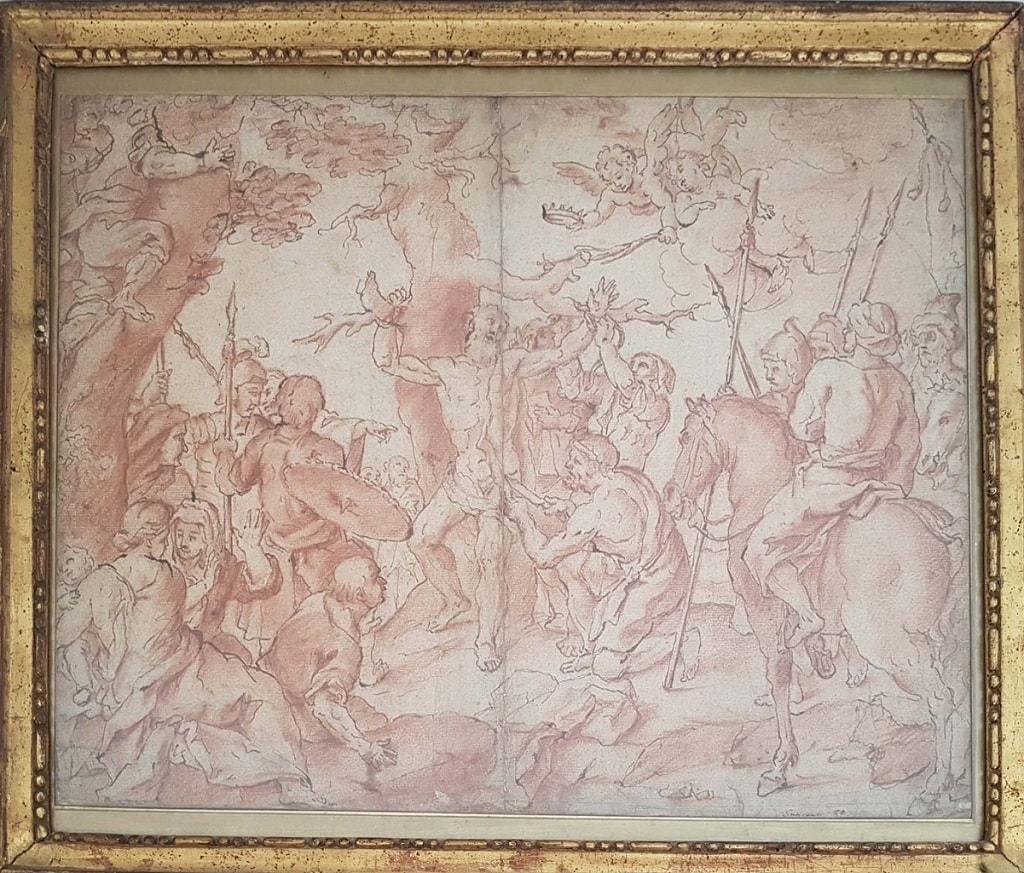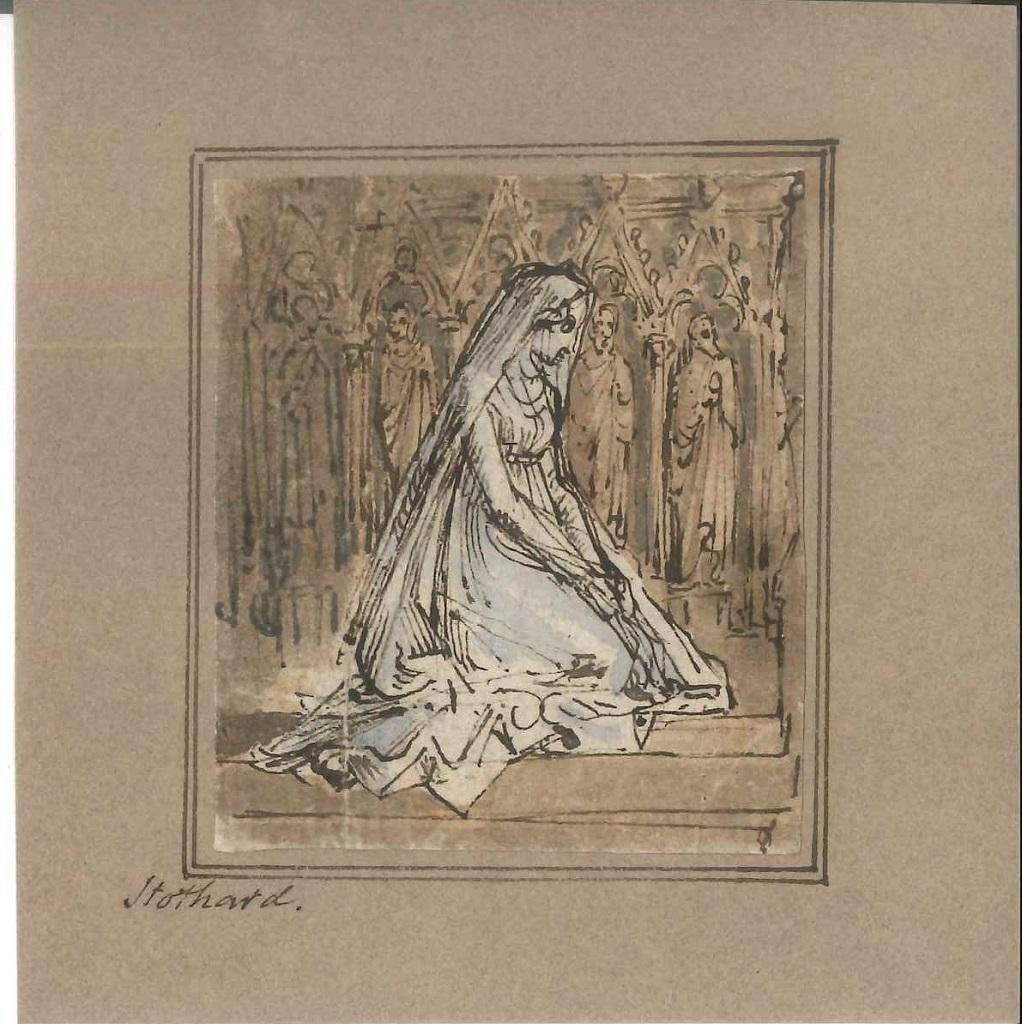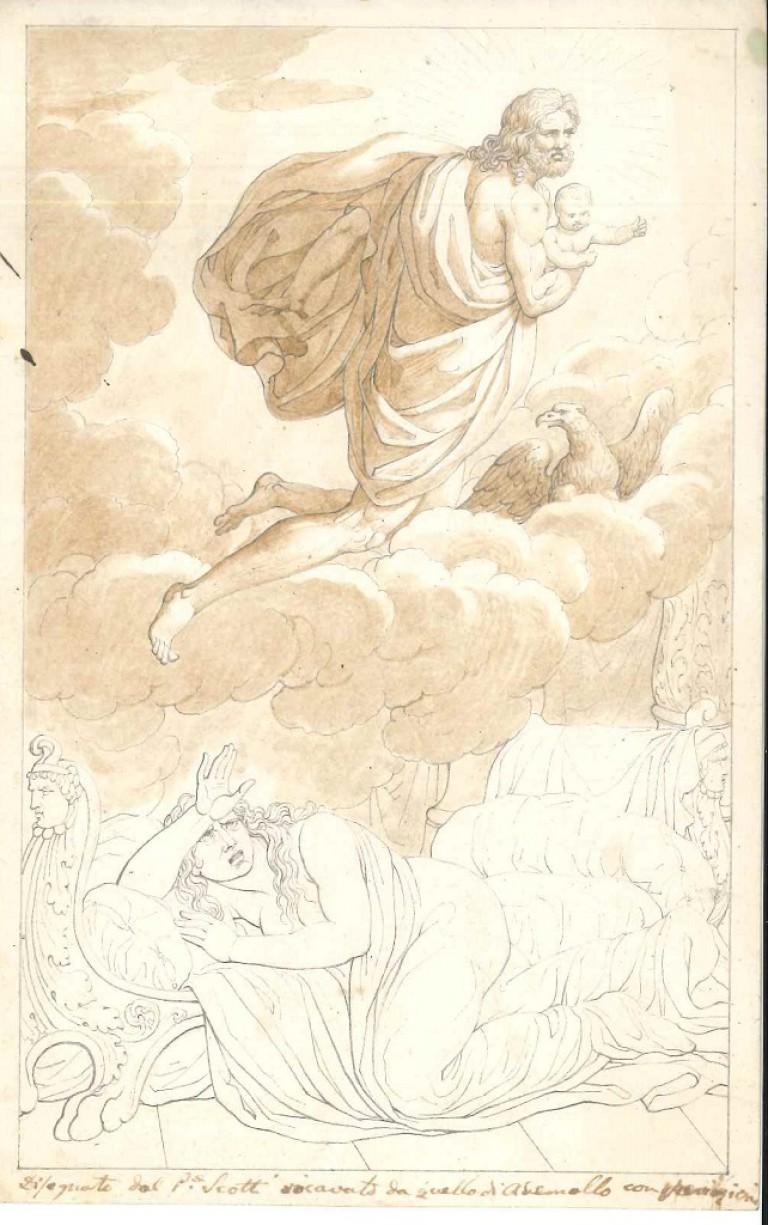Items Similar to Female figure with Child and Dog - Charcoal Drawing
Want more images or videos?
Request additional images or videos from the seller
1 of 2
UnknownFemale figure with Child and Dog - Charcoal Drawing
About the Item
Female figure with child and dog is a sublime original drawing (red chalk drawing on laid paper) by an exponent of the French School of the XVIII century.
In very good conditions, except for the uncut margins. This defect does not affect the plate.
Inscription: "254" written in pencil on the lower right corner of the verso.
Watermarks: a series of numbers and letters along the right margin.
Sweet scene in a triangle-shaped composition. The mother looks at her child lovingly.
Image Dimensions : 17 x 14 cm
- Dimensions:Height: 11.89 in (30.2 cm)Width: 7.41 in (18.8 cm)Depth: 0.04 in (1 mm)
- Medium:
- Movement & Style:
- Period:
- Framing:Framing Options Available
- Condition:Insurance may be requested by customers as additional service, contact us for more information.
- Gallery Location:Roma, IT
- Reference Number:
About the Seller
4.9
Platinum Seller
These expertly vetted sellers are 1stDibs' most experienced sellers and are rated highest by our customers.
1stDibs seller since 2017
6,726 sales on 1stDibs
Typical response time: 2 hours
- ShippingRetrieving quote...Ships From: Monaco, Monaco
- Return PolicyA return for this item may be initiated within 14 days of delivery.
More From This SellerView All
- Female Nudes - Charcoal, Ink and Watercolor DrawingLocated in Roma, ITFemale Nudes is a fine original drawing (China ink and watercolor on paper). Unsigned. This artwork could be attributed to Thomas Stothard. Although th...Category
Mid-19th Century Old Masters Figurative Drawings and Watercolors
MaterialsCharcoal, Ink, Watercolor
- Martyrdom of Saint Bartholomew - Drawing - 17th CenturyLocated in Roma, ITMartyrdom of Saint Bartholomew is a precious original drawing (black and red chalk, pen and China ink on laid paper, laid down on canvas) realized by...Category
17th Century Old Masters Figurative Drawings and Watercolors
MaterialsCharcoal, Ink, Watercolor
- In a Gothic ChurchLocated in Roma, ITIn a Gothic Church is a beautiful original drawing (China ink and watercolor on paper). Hand-signed "Stothard" in brown ink on the lower left margin outside of the image. Very sweet drawing representing a woman praying...Category
19th Century Old Masters Figurative Drawings and Watercolors
MaterialsCharcoal, Ink, Watercolor
- Mythological Subject - Charcoal and Ink DrawingLocated in Roma, ITMythological subject is a precious original drawing (black chalk, brush, and watercolor ink on ivory colored paper). Unsigned. Inscription: "Disegnato dal P. e Scotti ricavato da que...Category
19th Century Old Masters Figurative Drawings and Watercolors
MaterialsInk, Charcoal
- Baptism of Christ - Ink Drawing by Anonymous XIX CenturyLocated in Roma, ITBaptism of Christ is a beautiful original drawing (pen and ink on paper) by an anonymous of the Neoclassical school of the beginning of the 19th century. A ...Category
19th Century Old Masters Figurative Drawings and Watercolors
MaterialsInk
- Allegoric scene with the TiberLocated in Roma, ITAllegoric scene with the Tiber river is a fine original drawing (black chalk on laid and watermarked paper at the center) by an exponent of the Neoclassical school of the nineteenth ...Category
20th Century Old Masters Figurative Drawings and Watercolors
MaterialsInk
You May Also Like
- Princess from the SavannahLocated in Ibadan, OyoThe drawings showcase the beauty of the black women on one hand and also reflect the intimacy animals possess with females, especially horses, and princesses in royalty. They are muc...Category
21st Century and Contemporary Old Masters Figurative Drawings and Waterc...
MaterialsCanvas, Charcoal
- Ayanfe Omo ObaLocated in Ibadan, OyoThe drawings showcase the beauty of the black women on one hand and also reflect the intimacy animals possess with females, especially horses, and princesses in royalty. They are muc...Category
21st Century and Contemporary Old Masters Figurative Drawings and Waterc...
MaterialsCanvas, Charcoal
- Eighteenth century Old Master drawing - St JeromeBy John Hamilton MortimerLocated in London, GBPen, ink and wash Framed dimensions: 9 ½ x 11 ¼ inches Drawn c. 1763 This small, powerful study shows St Jerome contemplating the bible with a cross and sk...Category
18th Century Old Masters Figurative Drawings and Watercolors
MaterialsInk, Pen
- Eighteenth century Old Master drawing - Apollo destroying Niobe's childrenBy John Hamilton MortimerLocated in London, GBPen, ink and wash Framed dimensions: 13 x 11 ¼ inches Drawn c.1765 Verso: a study of a hanged man Mortimer has filled this small sheet with action, depicting in the top right, Apollo and Artemis...Category
18th Century Old Masters Figurative Drawings and Watercolors
MaterialsInk, Pen
- Three drawings by François Boucher in a mounting by Jean-Baptiste GlomyBy François BoucherLocated in PARIS, FRWe would like to thank Juliette Parmentier-Courreau of the Custodia Foundation for her welcome and support during the consultation of Glomy’s Journal des Ouvrages. This spectacularly large "feuille de desseins ajustés" commissioned by François Boucher from Jean-Baptiste Glomy is emblematic of the painter's art and mastery of rocaille. It is also fully representative of the taste of this period in the field of decorative arts. The largest of these three drawings, placed at the bottom of the composition, is particularly interesting: dating from around 1756, it constitutes a modello (apparently unpublished) for the frontispiece of the "Catalogue des tableaux de Monsieur de Julienne"), preserved in the Morgan Library in New York. 1. François Boucher, the master of French rocaille The extraordinary career of Francois Boucher was unmatched by his contemporaries in versatility, consistency and output. For many, particularly the writers and collectors who led the revival of interest in the French rococo during the last century, his sensuous beauties and plump cupids represent the French eighteenth century at its most typical. His facility with the brush, even when betraying the occasional superficiality of his art, enabled him to master every aspect of painting – history and mythology, portraiture, landscape, ordinary life and, as part of larger compositions, even still life. He had been trained as an engraver, and the skills of a draftsman, which he imbued in the studio of Jean-Francois Cars (1661 – 1738), stood him in good stead throughout his career; his delightful drawings are one of the most sought-after aspects of his oeuvre. As a student of Francois Lemoyne (1688 - 1737), he mastered the art of composition. The four years he spent in Italy, from 1727-1731, educated him in the works of the masters, classics and history, that his modest upbringing had denied him. On his return to Paris in 1734, he gained full membership of the Royal Academy of Painting and Sculpture with his splendid Rinaldo and Armida (Paris, Musée du Louvre). Although, throughout his career, he occasionally painted subjects taken from the Bible, and would always have considered himself first as a history painter, his own repertoire of heroines, seductresses, flirtatious peasant girls and erotic beauties was better suited to a lighter, more decorative subject matter. His mastery of technique and composition enabled him to move from large scale tapestry...Category
1750s Old Masters Figurative Drawings and Watercolors
MaterialsChalk, Ink
- Modello for the Virgin of the Rosary, a drawing by Francesco Vanni (1563 - 1610)Located in PARIS, FRFrancesco Vanni is one of the last representatives of the long Sienese pictorial tradition. In this masterly composition in pen and ink wash, he presents the Virgin of the Rosary, holding the Child Jesus on her lap, surrounded on her right by Saint Dominic and on her left by Saint Catherine of Siena. The presence of these two emblematic saints of the Dominican order is a reminder of the devotion of this order to the Rosary. 1. Francesco Vanni, a Sienese painter of the Counter-Reformation Francesco Vanni was the most important Sienese painter of the late sixteenth century and a key Italian Counter-Reformation painter. He developed a very specific style, inspired not by Florentine models but rather by the Roman, Bolognese and Marche schools, and in particular by the work of his contemporary Federico Barocci (Urbino 1535 - 1612), despite the two artists never meeting. Francesco Vanni was born in Siena around 1563-1564. His father died in 1567 and his mother remarried Arcangelo Salimbeni (1536 - 1579), then one of Siena’s leading painters. His half-brother Ventura Salembini (1568 - 1613) also became a well-known painter. He continued his apprenticeship in Bologna and Rome, where he joined the painter Giovanni de Vecchi’s (1536 - 1614) studio, where he was greatly influenced, like other Tuscan painters of the time, by the art of Federico Barocci. He devoted himself mainly to religious painting, following the canons of the Counter-Reformation. Travelling between Siena, Rome, Bologna and Parma, in 1604, he settled in Siena, where he ended his life. Vanni was also an important member of the Confraternity of the Sacro Chiodo, renowned for its demanding religious practices. His legacy also includes some important engraved work. 2. Description of the artwork The Virgin is depicted enthroned in majesty, slightly taller than the other figures that she dominates from her pedestal. Her wide robe with marked folds evokes Renaissance statuary. She is crowned by two angels in the sky. These two angels are a reminder of the custom of adding angels to crown 13th century icons which was frequent at Vanni’s time. The Child Jesus is standing on the Virgin’s right knee. With her left hand she holds out a rosary to Catherine of Siena, identifiable by a branch of lily in her hand. In a symmetrical gesture, the Child Jesus also holds out a rosary to St Dominic. Two of St Dominic’s attributes are to be found at the foot of the Virgin: a book and a branch of lilies. Vanni gives particularly delicate treatment to St. Dominic's long and slender hands. The two outstretched rosaries form the link between the heavenly register of the Virgin and the Child Jesus and the earthly register of the two Dominicans who are not crowned with a halo. This and the fact they are followed by a large crowd, indicates that they are both represented as part of the multitude of the living called to pray to the Rosary. According to the classical iconographic tradition, it would be plausible to consider that the figure looking at the viewer on the extreme left of the drawing could be a self-portrait of the painter. Francesco Vanni's face is known to us from a self-portrait kept in the Pinacoteca Nazionale in Siena. The squaring of the drawing suggests that it was used for a larger-scale altarpiece, probably for a church dedicated to St Dominic or for a Dominican convent. As of today, we have not identified the painting for which this drawing served as a preparatory modello. The Madonna of the Rosary in the Cathedral of Pitigliano (painted by Francesco Vanni in 1609) differs quite significantly from our drawing by the addition of Pope Pius V, and the inclusion of St. Dominic and St. Catherine in the celestial register. We believe that our drawing predates this painting because of its more symmetrical composition, and less Baroque influence. The presence of Saint Catherine of Siena, particularly venerated in his native town, to which Francesco Vanni returned frequently from 1590 onwards, leads us to propose a date of around 1590 - 1600 for this drawing. 3. The Rosary and the Dominican Order In order to clarify the iconographic meaning of this artwork, it is worth recalling the role of Saint Dominic in the spread of the Rosary prayer. Dominic Nuñez de Guzman was born around 1170 in Caleruega (near Burgos) in Spain and died in 1221 in Bologna, Italy. He was the founder of the order of friar preachers, commonly known as the Dominicans. He was canonised by the Church in 1234 and has since been celebrated under the name of Saint Dominic. After three days of prayer in the forest of Bouconne, near Toulouse, Dominic is said to have received the Rosary as a means of converting the Cathar population. The Dominicans subsequently made a special effort to promote this form of meditative prayer. Pope Pius V, a Dominican, included the feast of the Rosary (on October 7th) in the liturgical calendar in 1571. Rosary prayer has evolved over the centuries and traditionally consists of the recitation of three rosaries (four since St John Paul II). Each rosary consists of five tens of "Hail Mary...Category
16th Century Old Masters Figurative Drawings and Watercolors
MaterialsPen, Ink
Recently Viewed
View AllMore Ways To Browse
Old Master Drawings
Italian Master Drawing
Original Dog
Original Charcoal
Original Charcoal Art
Artwork Charcoal
Female Under
Old Master Italian Drawings
18th Century Drawings Originals
Drawings Italian 18th Century
Master Pencils Drawings
Old Dog
Dog Scene
Old Master Ship
Old Letters
Figural Charcoal
Figure Charcoal
Dog Figure
